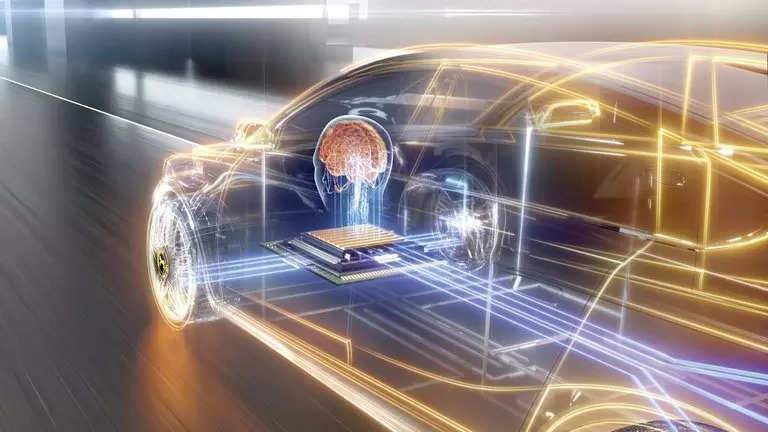New Delhi: Autonomous driving may come first in the global auto industry’s megatrends acronym of ACES (Autonomous, Connected, Electrification, Shared), but in market adoption it could trail behind the other megatrends. Ten years ago, when Tata Technologies worked on an autonomous car project for a global technology company, the Indian company expected the technology to be mainstream by now. “Of course that’s not happened despite the fact that Cruise and Waymo have autonomous taxis in San Francisco. We are an awful long way away,” Warren Harris. CEO and MD, Tata Technologies, told ETAuto.
One of the big reasons that autonomous driving has not become mainstream is “just cost”, and “we’re still years away from a proposition that makes commercial sense”, according to Harris who expects the inflection point for the technology’s adoption to be 5-7 years away.
However, though gradually, the initial levels of autonomous driving technologies, referred to as ADAS (Advanced Driver Assistance Systems) are making inroads. In the volume segment of the Indian passenger vehicle market, variants of models like Mahindra XUV 700, MG Astor, and Hyundai Tucson are trying to leverage the technology to differentiate themselves from competition.
Tata Technologies is among the industry players to add ADAS solutions to its portfolio, up to Level 3 of autonomous driving capabilities. Some “pilot work” on Level 4 is also being done by its engineers. Level 5 is the highest, where the car fully drives on its own.
Technology impact on the overall car
“One of the key challenges with regard to level 4 is that the utilisation of the product is likely to go up exponentially,” Harris said, and that will require reimagining and redesigning the automobile as we know it today. Personal vehicles today get used for as little as about 5% of the time. It’s expected to go up to 70% with the introduction of Level 4 autonomous driving technology. “So the interiors themselves need to be much more robust and we’ve done some work in and around the use of different materials. We’ve done some work in and around the whole cockpit experience, the whole interior experience,” he added.
And unlike in the current automotive industry, autonomous driving may not evolve in the same manner across the world. That could also spawn new form factors of mobility. Autonomous pods of different sizes have already started making their appearance in some places. In some cases they could be operating close to 24 hours of the day. “The life cycle is going to be determined by usage and so from an engineering perspective, they need to be developed in a certain manner,” Harris said.
Less product development cycles
As a reflection of the auto industry’s transition to an electric era, and increased collaboration, Tata Technologies also has to develop and deliver full OEM projects in a time frame which was almost unthinkable a few years ago. “A number of the vehicle programmes that we’ve won in the last 18 months have targeted 22 months,” he said. In the traditional industry, the timeline was 36-45 months till a few years ago.
One particular project, for an advanced vehicle engineering study, that Harris takes pride in bagging is from a Southeast Asian OEM who had traditionally worked with German and North American engineering service providers. “Typically the exercise would have taken place in the past six months. We delivered the exercise in one month and we did that primarily because of the configurable platform that we’ve got. And the vehicles that we are currently developing have now been built on that on that proprietary platform of ours,” Harris said.
Digital technology helped Tata Technologies in bagging the project. It has a configurable digital electric vehicle platform called EVMP which is being leveraged to design and engineer electric vehicles (EV). China’s Nio and Volvo’s Polestar are among the newage EV players that Tata Technologies has successfully served by leveraging digital engineering.
Tata Motors and Jaguar Land Rover, which together contribute 32% of Tata Technologies’s business, is its single largest set of customers.
Leveraging India’s engineering strength
Among the 18 technical centres that Tata Technologies has globally, the one in Pune specialises in full vehicle integration work, and the Bengaluru centre focuses on embedded technologies. ADAS development base is in Gothenburg, Sweden, while the UK and Shanghai teams have the responsibilities for lightweighting.
As the automotive business gets increasingly collaborative, led by the megatrends, India is increasingly growing as a preferred engineering and technology development base, particularly for digital technologies. As OEMs relook at their build versus outsource strategies to be agile and more competitive, Harris said the Indian suppliers have good opportunities. “That’s exciting for us, and I think it’s exciting for India because India has the demographic advantage like nowhere else in the world,” he said.
Eyeing a billion dollar market
As the opportunities grow, Tata Technologies, like some of its peers, looks to ramp up its engineering strength significantly. Currently, it has 11,000 engineers, which Harris said will be ramped up to 14,000 – 15,000 over the next one year. “The demand is there, the order book is there, the pipeline is there. The only constraint that we have is of supply,” he said.
The engineering services company grew 26% over the last pandemic-hit year to clock USD 473.5 million in the year to March ‘22. Harris sees a “consistent opportunity” for his company to grow in the 15%-20% range. And be “somewhere close” to the billion dollar mark in three years.
Cars may still not be autonomous by then, but a large number of them could go electric. Bigger opportunities ahead for engineering service and technology suppliers, but a big challenge would be to attract the right quality and quantity of talents. So, there are bigger opportunities for engineers and academia to scale up their game.
Also Read:


















